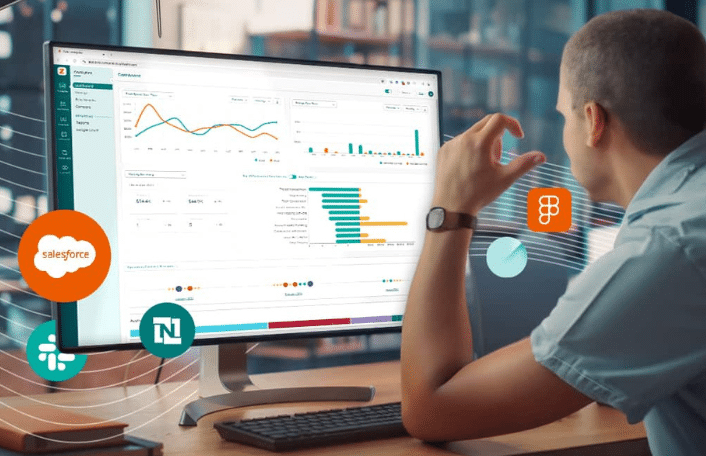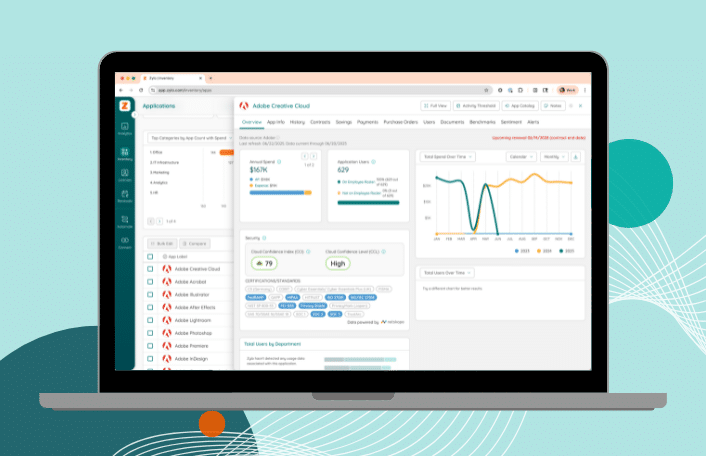
From Chaos to Control: Applying FinOps Thinking to SaaS
Table of Contents ToggleITAM, SAM, and SaaS Management: What’s the Difference?Information...
Back
Back
Search for Keywords...
Blog

Table of Contents
As technology has evolved, so has the way we manage and talk about it. Over the last few decades, IT has greatly shifted its focus from hardware to software, prompting new ways to manage it all.
In the cloud, we are managing licenses and subscriptions as OPEX versus CAPEX expenses. This means we don’t have to track licensing infrastructure components and middleware or hardware changes or work with depreciation tables. But it’s still a very transitional time, and not all companies are in the cloud.
That’s why ITAM, SAM, and SaaS Management remain very relevant topics in the IT world—each with their own distinct meanings and implications. If you’ve been wondering about the difference between ITAM, SAM, and SaaS Management and how they work together, it’s time to find out.
Though they seem similar, the terms ITAM, SAM, and SaaS Management are not interchangeable. While closely related, each area focuses on a particular area of asset and application management brought about by changes in the evolution of tech and IT procurement.
Gartner has stated: “As software publishers focus on growing SaaS and subscription license revenue, the active metering and cost management of applications become inescapable needs. IT sourcing and vendor management leaders should shift the focus of software asset management practices to eliminating excess expenditures.”
All IT assets: hardware and software
ITAM encompasses the financial, contractual, and risk management of all IT assets, both physical and digital. It is the overarching umbrella of all asset management and includes hardware and software.
While SAM has become a more popular topic of discussion (because of the shift to software license management and audit potential), it’s important to remember that software cannot exist without some physical assets, making ITAM’s overarching focus a continued priority within the business.
All software: on-prem and cloud
SAM is the practice of managing software, both on-prem and in the cloud. It includes the monitoring of software usage, procurement, deployment, risk management, licensing, and compliance throughout the lifecycle.
Because careful software asset management has the power to uncover huge cost savings for the business and increase utilization of key applications, SAM is shifting from a “nice to have” role in the company to a core business function.
Cloud-based software
SaaS management is the management of all cloud-based applications throughout the organization. You’ll notice that SaaS Management doesn’t include the word “asset.” That’s because it’s essentially about licensing and access.
In the SaaS world, software asset management (SAM) is less about being prepared for compliance audits, like in the on-premise world, and more about consumption, spend and license management. With SaaS, you don’t physically own anything such as you do with software, you’re just paying for user licenses of the product in the cloud.
SaaS isn’t purchased or used like traditional software, so it can’t be managed like it either.
4 Need-to-Know SaaS Stats for Software Asset Management
Learn MoreWhile SAM encompasses both on-premises software and SaaS, these two elements and the way they’re managed are very different. For instance:
With SaaS, you only pay to provision the licenses you need. The cost is more flexible than on-prem software because of this, but the contracts often auto-renew, regardless of how the licenses are used, if they are not proactively managed.
Because you’re essentially accessing the SaaS licenses via the cloud, no hardware, in-house training, or maintenance is required. The vendor hosts the application and monitors its security for you as part of the cost, but it’s hard to control what data employees store in the cloud apps without a governance strategy.
SaaS is faster and easier to implement and doesn’t usually require as many IT resources, which is leading to decentralized purchasing across the business and lack of visibility and governance around technology.
While many newer companies (typically 20 years old or less) are forming under a strictly SaaS-based model, many companies are still managing on-prem software while actively transitioning to the cloud. This includes older, larger corporations in both tech and non-tech that were built before cloud computing began.
While many of these companies are progressive in their motivation to transition to the cloud, the reality is that change will be slow-moving for companies who were built on on-prem software.
Even though moving to the cloud has many advantages, the risk of having too many user licenses and/or inactive user licenses can cause licensing costs to skyrocket if not properly managed. Meanwhile, the cost of IT is becoming a regular topic of discussion among business leaders.
Not only must SAM for SaaS become a top priority in the business, but firms must also implement the best SAM processes to ensure the highest utilization and lowest cost throughout the company.
More and more businesses are building their foundations on SaaS, while existing companies are beginning to migrate to the cloud faster and more aggressively. But for now, the prevalence of hardware, on-prem software, and cloud-based apps make it essential for IT professionals to refine their strategies to address all facets of IT asset management.
By proactively monitoring software usage in a single system of record, businesses can keep costs down, better mitigate risk, and increase productivity for users throughout the organization.

Table of Contents ToggleITAM, SAM, and SaaS Management: What’s the Difference?Information...

Table of Contents ToggleWhy Data Integrity Breaks DownWhat Does Data Integrity...

Table of Contents ToggleITAM, SAM, and SaaS Management: What’s the Difference?Information...

Table of Contents ToggleShelfware DefinedWhy Shelfware HappensPoor Organizational OversightShadow IT and...
| Cookie | Duration | Description |
|---|---|---|
| cookielawinfo-checkbox-analytics | 11 months | This cookie is set by GDPR Cookie Consent plugin. The cookie is used to store the user consent for the cookies in the category "Analytics". |
| cookielawinfo-checkbox-functional | 11 months | The cookie is set by GDPR cookie consent to record the user consent for the cookies in the category "Functional". |
| cookielawinfo-checkbox-necessary | 11 months | This cookie is set by GDPR Cookie Consent plugin. The cookies is used to store the user consent for the cookies in the category "Necessary". |
| cookielawinfo-checkbox-others | 11 months | This cookie is set by GDPR Cookie Consent plugin. The cookie is used to store the user consent for the cookies in the category "Other. |
| cookielawinfo-checkbox-performance | 11 months | This cookie is set by GDPR Cookie Consent plugin. The cookie is used to store the user consent for the cookies in the category "Performance". |
| viewed_cookie_policy | 11 months | The cookie is set by the GDPR Cookie Consent plugin and is used to store whether or not user has consented to the use of cookies. It does not store any personal data. |
